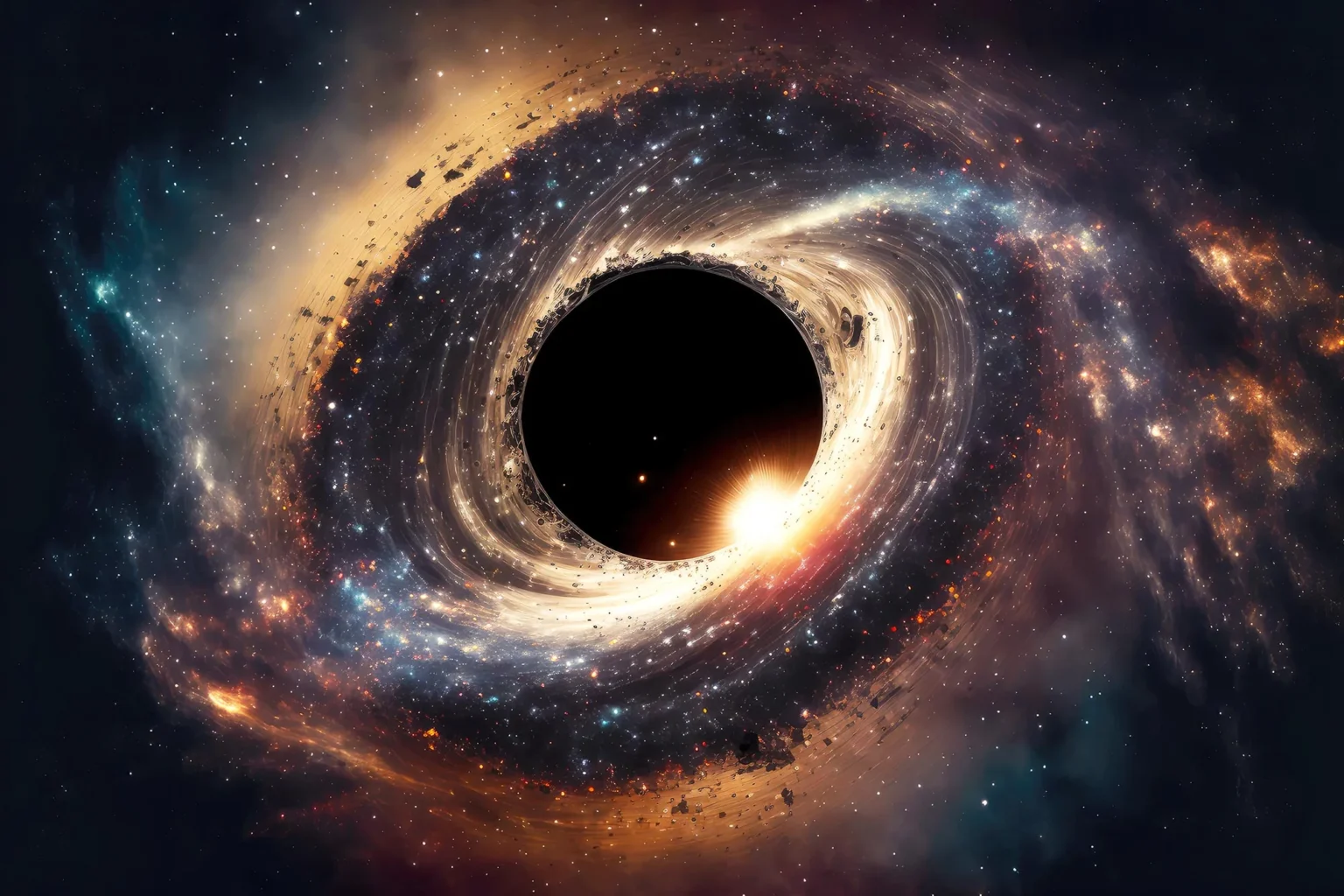Scientists peering into the depths of space, utilizing the now-retired Spitzer Space Telescope, have shed light on a perplexing phenomenon surrounding a supermassive black hole situated 2.5 million light-years away, dwarfing our sun by billions of times.
Published in the Astronomical Journal and reported by Space.com, the new findings unveil significant streams of gas and dust hurtling towards the core of the Andromeda galaxy, where the colossal black hole resides.
This cosmic spectacle, as per the report, unfolds silently. While similar giants have been observed indulging in vast cosmic matter before, the dietary habits of this particular black hole remained enigmatic.
The research indicates that these black holes consume hefty streams of gas at a consistent pace, causing fluctuations in brightness as the material spirals around the gargantuan celestial consumer. NASA likened this activity to the motion of water swirling down a drain.
Co-author of the study, Almudena Prieto, an astrophysicist at the Institute of Astrophysics of the Canary Islands and the University Observatory Munich, remarked, “This is a remarkable instance of scientists revisiting archival data to unveil further insights into galaxy dynamics by juxtaposing it with cutting-edge computer simulations. We have data dating back two decades that reveals details we initially overlooked.”
The study concludes that the matter streams must maintain a steady pace and specific size to avoid triggering luminosity fluctuations or ‘belches’ from the black hole.
These findings challenge the notion that all supermassive black holes consume nearby matter in identical fashion, offering a fresh perspective on the cosmic buffet enjoyed by these colossal entities.


